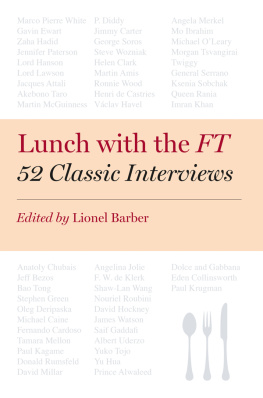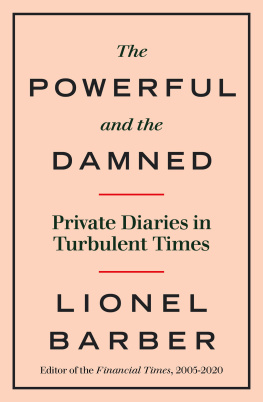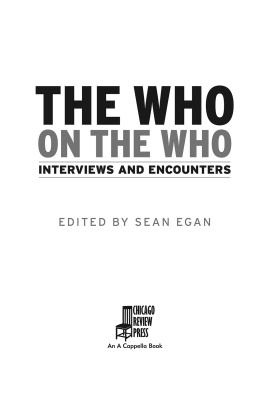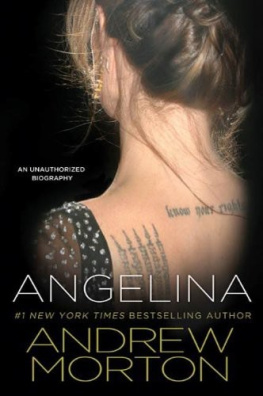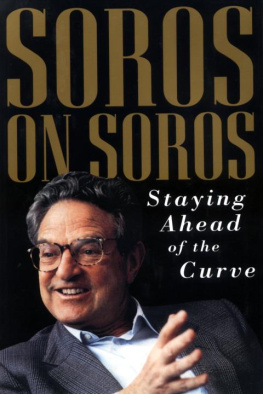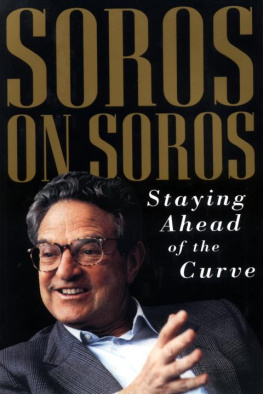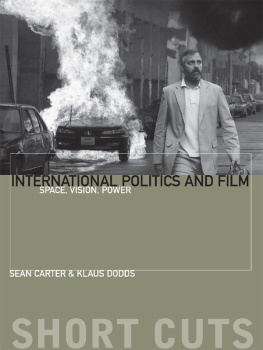
Lunch with the FT
52 Classic Interviews
Edited by Lionel Barber
Foreword by John Ridding
Illustrations by James Ferguson
PORTFOLIO PENGUIN
Published by the Penguin Group
Penguin Books Ltd, 80 Strand, London WC2R 0RL, England
Penguin Group (USA) Inc., 375 Hudson Street, New York, New York 10014, USA
Penguin Group (Canada), 90 Eglinton Avenue East, Suite 700, Toronto, Ontario, Canada M4P 2Y3 (a division of Pearson Penguin Canada Inc.)
Penguin Ireland, 25 St Stephens Green, Dublin 2, Ireland (a division of Penguin Books Ltd)
Penguin Group (Australia), 707 Collins Street, Melbourne, Victoria 3008, Australia (a division of Pearson Australia Group Pty Ltd)
Penguin Books India Pvt Ltd, 11 Community Centre, Panchsheel Park, New Delhi 110 017, India
Penguin Group (NZ), 67 Apollo Drive, Rosedale, Auckland 0632, New Zealand (a division of Pearson New Zealand Ltd)
Penguin Books (South Africa) (Pty) Ltd, Block D, Rosebank Office Park, 181 Jan Smuts Avenue, Parktown North, Gauteng 2193, South Africa
Penguin Books Ltd, Registered Offices: 80 Strand, London WC2R 0RL, England
www.penguin.com
First published 2013
Copyright Financial Times, 2013
Articles by Rob Blackhurst, Kieran Cooke, Andrew Davidson, Beverley Doole,
Amity Shlaes and Nigel Spivey are reprinted by permission of the respective authors.
Illustrations by James Ferguson reproduced by arrangement with the illustrator.
David Hockney, Self Portrait Using Three Mirrors, watercolour on paper 24 x 18 1/8",
2003, Collection The David Hockney Foundation. Copyright David Hockney, 2003
Photo Credit: Richard Schmidt
All rights reserved
The moral right of the authors has been asserted
ISBN: 978-1-101-63452-3
Foreword
Lunch with the FT has long been a mainstay of the Financial Times weekend section, a consistently entertaining read, and a unique seat at the table with the personalities and players who have shaped our times. This book is, therefore, a fitting way to mark the newspapers 125th birthday rekindling memorable moments and reacquainting ourselves with the protagonists from that history.
But these interviews also tell a broader FT story. They provide a reminder of some of the guiding beliefs and objectives that have served us well over the years, and will remain at the centre of our publication and our purpose. While many in media and publishing struggle to survive amid the forces of digital disruption, the FT remains in strong shape. This is partly because we have embraced digital delivery and innovative web formats. But it is mainly because of our sustained commitment to quality journalism and our confidence in its value and importance to our readers.
That commitment to quality is matched by our dedication to a global perspective. Our international expansion from the FTs UK roots was well under way when our first lunch guest sat across the table in 1994. Since then, our branches have extended and flourished across the US, Asia and the fast-rising economies of the BRICs and beyond.
These portraits chart the evolution and revolutions of global society, which will always be at the heart of the Financial Times.
John Ridding
CEO, Financial Times
Introduction
From the very first mouthful, Lunch with the FT was destined to become a permanent fixture in the newspaper. The formula was deceptively simple: a conversation-cum-interview over an agreeable lunch. Since its debut in 1994 there have been more than 800 lunches, featuring presidents, playwrights, tycoons, film-stars, monks and more than the occasional oddball. Lunch with the FT has become an institution, as entertaining and enduring as the Lex column.
To celebrate this years 125th anniversary of the Financial Times, we are publishing 52 of the best of the genre one for every week of the year. Our list is an international whos who from the arts, business, politics and science. The selection pays due regard to gender and geography, but above all it seeks to meet the test once set out by Richard Lambert, a former editor of the Financial Times. The task of FT journalism, he reminded colleagues, is not only to inform but also to delight readers.
Lunch with the FT was conceived by Max Wilkinson, a crusty, enterprising editor of the Weekend FT with an acute sense of the absurd. He thought the new interview format would provide a ray of sunshine in the paper. The rules were straightforward. The guest/interviewee would choose the restaurant, and the FT would foot the bill. In fact, the Wilkinson rules were broken on the very first outing.
The FTs first guest on 23 April 1994 was Marco Pierre White, the celebrity chef-cum-restaurateur whom our interviewer (Michael Thompson-Noel) memorably dubbed the wild man of English cooking. White, who had chosen one of his own restaurants in which to be amply wined and dined, rejected any notion that the FT would pick up the tab. The principle that the FT pays has otherwise mostly held firm, despite protestations from interviewees. What we view as a declaration of editorial independence has often been taken as a cultural insult or a poor reflection of the guests own financial standing. Now I know why the FT is so expensive was the barbed quip of billionaire Michael Bloomberg on failing to pick up a $96 bill in New York, where he is now mayor.
The original idea behind Lunch with the FT was to rediscover the art of conversation in a convivial setting. Good food was essential, preferably washed down with a decent bottle of wine to elicit insights and the occasional indiscretion. The combination led to some memorable encounters, notably a liquid lunch of biblical proportions at the Caf Royal between Nigel Spivey, a Cambridge don and freelance FT writer, and Gavin Ewart, the 79-year-old poet. The next day, Spivey received a call from Mrs Ewart, saying that her husband had returned home happier than she had seen him in a long time. The second [thing] and you are not to feel bad about this is that he died this morning.
Less fatal twists of fate feature in this book. In 1996 Jacques Attali, the enfant terrible of French intellectual life, announced halfway through lunch in Paris with Lucy Kellaway that he had to leave to go to a second lunch. Apparently, gastronomic two-timing was de rigueur for Attali. Another mid-lunch upset saw Ronnie Wood, the ageing Rolling Stone, excusing himself from his oysters to take a call from the Sun newspaper inquiring about his teenage mistress. But the ultimate bombe surprise came from Yuko Tojo, the granddaughter of the Japanese prime minister hanged after the Second World War. She brought his remains to lunch in Tokyo with David Pilling, our Asia editor.
Many lunches in this book show the FT at its eclectic best. Naturally, there is star-power aplenty: Angelina Jolie, Michael Caine, Martin Amis and Sean P. Diddy Combs, the hip-hopper-cum-business-magnate, who turned up in a Seventh Avenue soup shop in New York. There are statesmen and -women: Vclav Havel, the Czech playwright-turned-president and father of the post-communist nation; F. W. de Klerk, who brought about the end of apartheid in South Africa; and Angela Merkel, in a revealing interview in 2003, before she became German chancellor and arguably the most powerful politician in Europe. There are fashionistas such as Tamara Mellon, the founder of Jimmy Choo, as well as a rare luncheon duet with Domenico Dolce and his partner Stefano Gabbana. And there are tales of the unexpected from General Rosso Jos Serrano, the Colombia police chief who cornered Pablo Escobar before the drug kingpin died in a hail of bullets.

